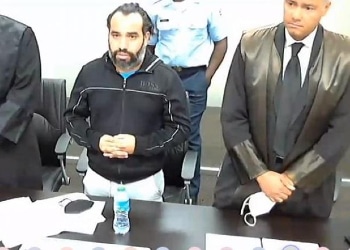The dismantling of one of the Dominican Republic’s largest drug trafficking rings has revealed that the Caribbean nation serves not only as a cocaine transshipment point but also a money laundering hub.
The syndicate — formerly run by jailed crime boss César Emilio Peralta, alias “El Abusador” — laundered more than $260 million in drug proceeds during the past three years, according to a July 31 press release from the Dominican Republic’s Attorney General’s Office.
Luis Eduardo Velásquez Cordero, alias “El Pequeño,” was charged with running the laundering operation using shell companies before being arrested at the end of July, prosecutors said.
Peralta, known locally as the “cocaine king,” is accused of controlling the drug ring’s operations out of the capital, Santo Domingo. Relying on corrupt police and government officials, as well as contacts with Mexican organized crime groups, the nightclub impresario trafficked cocaine into the United States and Europe, according to prosecutors.
SEE ALSO: Arrests Thrust Dominican Republic’s Top Drug Lord Into Spotlight
Authorities captured Peralta in December 2019 in the Colombian port city of Cartagena after he fled the Dominican Republic.
Another alleged member of Peralta’s network, Rhinel Rodríguez, alias “Fido,” was also arrested alongside Velásquez Cordero. Authorities seized $162,000 in cash from Velásquez Cordero during the arrest, as well as a Range Rover worth $150,000.
Following the arrests, local officials raided a number of other properties belonging to Velásquez Cordero and seized a dozen more luxury vehicles, including a Ferrari.
Authorities said they have now arrested 23 of the 30 people who made up Peralta’s criminal group.
InSight Crime Analysis
The vast sums of money laundered by Peralta’s operation indicate that the Dominican Republic is hospitable to international drug shipments and illicit financial flows.
The $260 million that authorities allege Velásquez Cordero laundered over the last three years translates to more than $7 million in drug proceeds cleaned every month.
Peralta and his network primarily used a number of nightclubs — all owned or controlled by him through frontmen — to launder drug proceeds.
The Dominican Republic’s tourism sector, which features nightclubs like the ones Peralta used to launder his drug proceeds, takes in huge profits. In 2019 alone, the industry recorded more than $7 billion in revenue, according to government data.
SEE ALSO: Coverage of the Dominican Republic
The network also coordinated bulk cash deliveries from the United States to then launder in the Dominican Republic, according to the US Treasury Department’s Office of Foreign Assets Control (OFAC), which classified Peralta and eight other associates of his as “significant foreign narcotics traffickers” in an August 2019 designation.
The Basel Institute on Governance’s 2020 Anti-Money Laundering Index identified the Dominican Republic as having moderate risk for money laundering. However, the US State Department’s 2020 International Narcotics Control Strategy Report (INCSR) report went even further, saying that “corruption within the government and the private sector, the presence of international illicit trafficking cartels, a large informal economy, and weak financial controls make the [Dominican Republic] vulnerable to money laundering threats.”
The Caribbean has long served the interests of money launderers. Based on recommendations from the Financial Action Task Force earlier this year, the European Union (EU) singled out a number of countries in the region, including the Bahamas, Barbados and Jamaica, as having “strategic deficiencies” when it comes to combatting money laundering.

